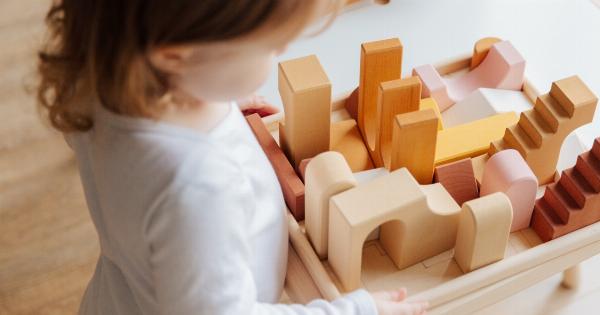Adolescence is a crucial period of brain development, marked by numerous physical, emotional, and cognitive changes. During this time, the brain undergoes significant remodeling, with the formation of neural connections and the pruning of others.
While there are various factors that contribute to brain development during adolescence, play emerges as a key component that impacts cognitive, social, and emotional skills. This article explores the vital connection between play and adolescent brain development.
1. The Importance of Play in Adolescent Development
Play is a fundamental aspect of human life, and it serves as a medium for learning and development across all stages of life. During adolescence, play takes on new dimensions and becomes more complex.
It enables adolescents to engage in imaginative and creative activities, explore their identities, develop problem-solving skills, and build social connections.
2. Neural Plasticity and Play
Adolescence is marked by enhanced neural plasticity, which refers to the brain’s ability to reorganize and modify itself in response to experiences.
Play provides a rich and varied environment that stimulates neural plasticity by activating different regions of the brain. It presents opportunities for diverse sensory, motor, and cognitive experiences that facilitate the development of neural connections.
3. Cognitive Skills and Play
Play has a profound impact on various cognitive skills during adolescence. It enhances executive functions such as working memory, attentional control, cognitive flexibility, and inhibitory control.
These skills are crucial for academic performance, problem-solving, decision-making, and self-regulation.
4. Social Skills and Play
Adolescent play is characterized by increased social interactions and the development of social skills. Through play, adolescents learn to navigate social situations, negotiate conflicts, cooperate, empathize, and understand social norms.
These experiences foster the development of emotional intelligence and empathy, which are essential for building and maintaining relationships.
5. Emotional Regulation and Play
Adolescence is a period of heightened emotional sensitivity. Play provides a safe space for adolescents to express and regulate their emotions.
Engaging in play activities allows them to manage stress, cope with challenges, and explore different emotional states. Through pretend play, they can experiment with different roles and perspectives, fostering emotional understanding and regulation.
6. Physical Development and Play
Physical play, such as sports, exercise, and outdoor activities, contributes to the overall physical development of adolescents. It enhances motor skills, coordination, strength, and endurance.
Physical play also promotes healthy lifestyle habits, reduces sedentary behaviors, and reduces the risk of obesity and related health issues.
7. Risk-Taking and Play
Risk-taking is a natural part of adolescent development, and play provides a controlled environment for risk exploration.
Play activities involving moderate risks, such as climbing, treehouse building, or adventure sports, enable adolescents to challenge themselves, overcome fears, and develop resilience. It teaches them to assess risks, make informed decisions, and adapt to novel situations.
8. The Role of Play in Academic Performance
Engaging in play, both in formal and informal settings, can positively impact academic performance. Play stimulates curiosity, creativity, and problem-solving skills, which are essential for effective learning.
It enhances motivation, engagement, and information retention. Play-based learning approaches, such as gamification and interactive educational activities, promote a deeper understanding of complex concepts and improve academic outcomes.
9. Technology and Play
The advent of technology has transformed the way adolescents engage in play. Digital play, including video games, online communities, and virtual reality experiences, offer new opportunities for cognitive and social development.
However, excessive screen time and the lack of balance between digital and physical play can have adverse effects on sleep patterns, mental health, and overall well-being. It is crucial to promote mindful and balanced technology use for optimal play experiences.
10. Promoting Healthy Play Experiences
To optimize the benefits of play for adolescent brain development, it is essential to create environments that foster healthy play experiences.
Schools, families, and communities play an instrumental role in providing diverse play opportunities that cater to individual interests and abilities. Encouraging free play, structured play, and a mix of physical, social, and imaginative play activities can support holistic brain development.






























